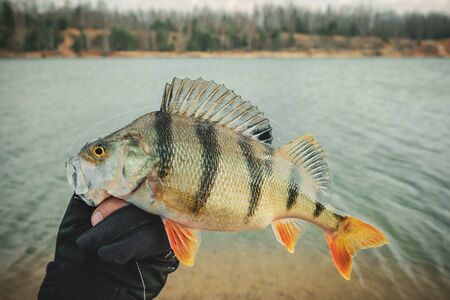1. What Is a Baitcaster Gear Ratio?
When youre choosing a baitcasting reel, one of the most important specs to understand is the gear ratio. But what does that actually mean? In simple terms, the gear ratio tells you how many times the spool turns with each full turn of the reel handle. Its written in a format like 6.4:1, where “6.4” is the number of spool rotations and “1” represents one handle turn.
Why Gear Ratios Matter
The gear ratio directly affects how fast you can retrieve your line. A higher ratio means a faster retrieve, which is great when you need to bring in your lure quickly or cover water fast. On the flip side, a lower gear ratio gives you more torque—kind of like shifting into low gear on a bike—which helps when youre reeling in heavy lures or fighting big fish.
How Gear Ratios Are Calculated
The calculation behind gear ratios involves counting how many times the spool rotates for every full turn of the handle. For example, if your reel has a 7.1:1 gear ratio, that means the spool turns 7.1 times for each handle rotation.
Common Baitcaster Gear Ratios
Here’s a quick breakdown of common baitcaster gear ratios and their general applications:
| Gear Ratio | Spool Speed | Best For |
|---|---|---|
| 5.4:1 to 5.9:1 | Slow | Crankbaits, deep-diving lures |
| 6.1:1 to 6.9:1 | Medium | All-purpose use, spinnerbaits, soft plastics |
| 7.0:1 and up | Fast | Topwater lures, jigs, when quick retrieves are needed |
A Quick Tip
If youre just starting out with baitcasters, a medium-speed gear ratio around 6.4:1 is a solid all-around choice. It gives you enough speed without sacrificing too much power.
2. High Gear Ratios: Speed and Reaction
High gear ratios on baitcasters, typically 7.1:1 and above, are all about speed and quick reaction time. These reels pick up more line with each turn of the handle, making them perfect for techniques that require fast retrieves or quick follow-up casts.
What Does a High Gear Ratio Mean?
A gear ratio like 7.1:1 means the spool rotates 7.1 times for every single turn of the handle. The higher the first number, the faster the reel retrieves line. Here’s a quick comparison:
| Gear Ratio | Speed | Best For |
|---|---|---|
| 6.4:1 | Medium | All-around use |
| 7.1:1 | Fast | Topwater, pitching, flipping |
| 8.1:1 and up | Very Fast | Burning lures, fast follow-ups |
When to Use High Gear Ratios
If youre fishing in situations where you need to get your bait back quickly to make another cast—like when working topwater lures or pitching into heavy cover—a high-speed reel is your best friend.
Topwater Fishing
Baits like buzzbaits or walking-style topwaters require a steady, fast retrieve to stay effective on the surface. A high gear ratio helps you maintain that speed effortlessly.
Pitching and Flipping
When targeting bass in thick cover, you often need to pitch your bait into tight spots repeatedly. A high-speed reel lets you pull the bait out fast and immediately get it back in position for another shot.
Covering Water Quickly
If youre searching for active fish across a large area, high gear ratios allow you to burn through unproductive water fast so you can focus on hotspots.
Pro Tip:
High-speed reels are great for reaction techniques but be mindful—they can make it easier to overwork a bait if youre not careful. Let the fish set the pace when needed!

3. Medium Gear Ratios: Versatility and Control
When youre looking for a baitcaster that can handle a little bit of everything, medium gear ratios—typically around 6.4:1—are your best bet. These reels strike a nice balance between speed and power, making them a solid all-around choice for anglers who like to mix up their fishing styles.
What Does a 6.4:1 Gear Ratio Mean?
A 6.4:1 gear ratio means the spool rotates 6.4 times with one full turn of the handle. This provides a moderate retrieve speed that’s neither too fast nor too slow, giving you more control over your lure presentation.
Why Go with a Medium Gear Ratio?
If youre not targeting one specific species or using just one technique, a mid-range gear ratio offers the flexibility to adapt on the fly. Whether you’re working a crankbait, jigging near structure, or burning a spinnerbait through open water, this gear range has you covered.
Advantages of Medium Gear Ratios
| Benefit | Description |
|---|---|
| Versatility | Works well with a wide range of lures and techniques. |
| Control | Easier to manage lure speed and depth, especially when working cover. |
| Beginner-Friendly | Great option for anglers still learning different techniques. |
| Reduced Fatigue | Less effort needed for longer retrieves compared to high-speed reels. |
Best Uses for Mid-Range Reels (6.4:1)
- Casting crankbaits: Allows steady retrieve without overpowering the action.
- Spinnerbaits: Keeps the blades at an ideal speed for enticing strikes.
- Texas rigs and soft plastics: Provides enough torque to work baits slowly and feel subtle bites.
- Topwater lures: Offers better control to create lifelike movement on the surface.
If youre only bringing one baitcaster to the lake, go with something in the 6.4:1 range. It’s like having a Swiss Army knife in your tackle box—ready for whatever the day throws at you.
4. Low Gear Ratios: Power and Torque
When it comes to baitcasting reels, low gear ratios—typically under 6.0:1—are all about power and torque. These reels retrieve line more slowly, but they make up for it with the muscle needed to handle heavy lures and fight strong fish. If youre targeting big bass in deep water or using resistance-heavy baits, a low gear ratio reel can be your best friend.
What Is a Low Gear Ratio?
A gear ratio tells you how many times the spool turns with one turn of the reel handle. For example, a 5.4:1 gear ratio means the spool rotates 5.4 times per handle turn. The lower that number, the slower the line retrieval—but with more cranking power.
When to Use Low Gear Ratios
Low gear ratios are ideal when you need control and torque rather than speed. Here are some common scenarios where low-speed reels shine:
| Fishing Technique | Why Low Gear Works |
|---|---|
| Deep Cranking | The slower retrieve helps keep big crankbaits at the right depth and reduces fatigue from resistance. |
| Slow-Rolling Spinnerbaits | You get a steady, slow presentation that stays in the strike zone longer. |
| Pulling Big Swimbaits | The added torque helps manage heavy lures without overworking your arms. |
| Towing Fish from Heavy Cover | The extra power gives you better leverage when pulling bass out of thick vegetation or structure. |
The Benefits of Slower Gears
- Torque: More power per turn makes it easier to handle heavy resistance.
- Bait Control: Slow retrieves help maintain lure action and stay in the strike zone longer.
- Less Fatigue: Great for techniques that require long casts and continuous cranking.
A Few Popular Low-Gear Baitcasters
- Daiwa Tatula 150 – 5.5:1
- Lews BB1 Pro – 5.4:1
- Shimano Curado K – 5.0:1
Bass Fishing Tip:
If youre fishing deep ledges or slow-rolling through grass lines, switching to a low-gear reel can help you stay consistent and feel every bump along the bottom.
5. Choosing the Right Gear Ratio for Your Technique
When it comes to baitcasting reels, selecting the right gear ratio can make a big difference in how effective your presentation is. In U.S. freshwater fishing, anglers target a variety of species like largemouth bass, smallmouth bass, pike, and walleye using different techniques and lures. Each of these methods benefits from a specific gear ratio range to maximize performance and efficiency.
Understanding What Gear Ratios Mean
A baitcaster’s gear ratio tells you how many times the spool turns with each turn of the handle. For example, a 6.4:1 gear ratio means the spool turns 6.4 times per handle rotation. Higher numbers retrieve line faster, while lower numbers provide more cranking power.
Matching Gear Ratios to Fishing Styles
Here’s a breakdown of common freshwater fishing techniques and which gear ratios work best for them:
| Gear Ratio | Best For | Common Lures | Target Species |
|---|---|---|---|
| 5.1:1 – 6.3:1 (Low) | Slow presentations where torque is needed | Deep-diving crankbaits, swimbaits, spinnerbaits (slow roll) | Largemouth bass, walleye, pike |
| 6.4:1 – 7.1:1 (Medium) | All-around use; good balance of speed and power | Texas rigs, jigs, topwaters, chatterbaits | Bass (largemouth & smallmouth), walleye |
| 7.2:1 – 9.1:1 (High) | Fast retrieves or when picking up slack quickly matters | Frogs, jerkbaits, punching rigs, flipping baits | Largemouth bass, especially in heavy cover |
Technique-Specific Examples
Punching and Flipping Heavy Cover
If youre fishing in thick vegetation or heavy structure—common in Southern states like Florida or Texas—youll want a high-speed reel (7.5:1 or higher). This lets you pull fish out fast before they tangle up.
Deep Cranking for Summer Bass
In lakes across the Midwest or South during hot months, bass often move deep. A lower gear ratio like 5.4:1 gives you more torque to reel in resistance-heavy deep-diving crankbaits all day without tiring your arm.
Topwater Action at Dawn or Dusk
For exciting topwater bites—especially in places like Lake Guntersville or Lake Erie—a mid-to-high gear ratio (6.8:1 to 7.5:1) helps you keep up with fast-moving fish that strike aggressively at the surface.
The Bottom Line on Matching Your Reel to the Job
No single gear ratio fits every situation. Think about how fast you need to retrieve line and how much resistance your lure will create underwater. Use this guide as a starting point and tweak based on your local waters and preferred fishing styles.


